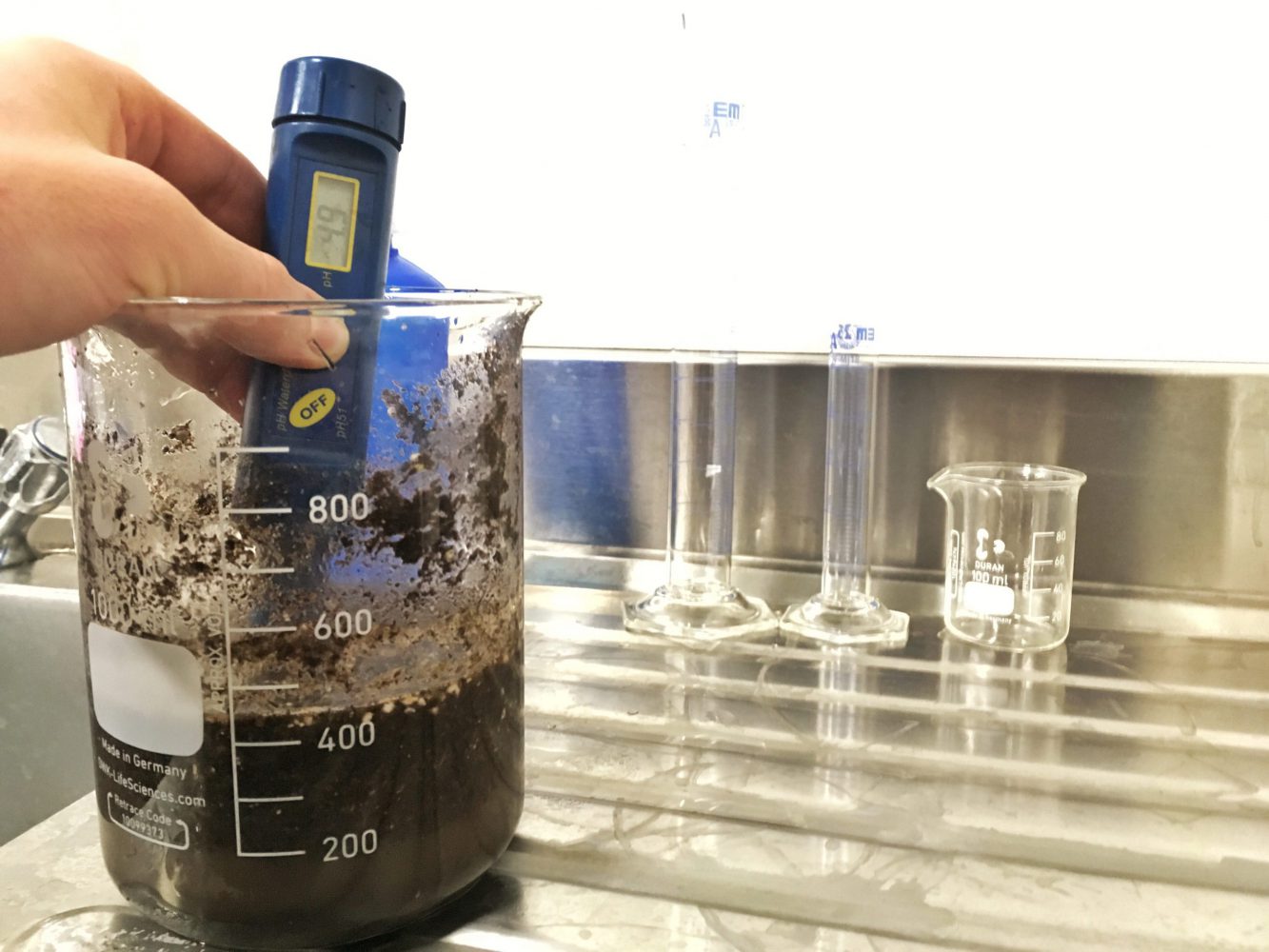Testing Ph In Your Soil
In this article we’ll show you how to take pH measurements in your soil. I can hear you think, why would you need to measure the pH in your soil when you already measure it in the water you give your plants?
Well, your soil is alive, and there are all kinds of processes going on in there that influence the pH. So, even though you may feed your plants water at an ideal pH levels, once the water hits the soil there’s no telling what the pH does without measuring. That’s why it’s a good idea to test your soil pH at least once every grow cycle.
Unfortunatley you won’t get any reliable readings from sticking your standard pH meter for liquids in your soil. (Or can you? see the “Direct Soil Test” below!) Apart from the standard pH meter for liquid solutions, there are also specialized soil pH meters available, but they can be quite an investment. That’s why we’ll use this article to show you three techniques that you can use to get an idea of the pH in your soil. (Not sure what pH is exactly? Click here for our article on pH basics)
SIMPLE PH SOIL TEST
The first, and simplest method is also the least accurate. It will tell you if your soil is acidic, alkaline or neutral in pH, and it’s quite a fun test to do!
It’s so simple, you probably have everything you need laying around your kitchen. This is what you’ll need:
– White vinegar
– Baking soda
– Tablespoon
– Cups for holding soil and liquid
– Soil samples
– Water (preferably distilled or reverse osmosis water)
1. Start by taking a few samples at different spots (but at the same depth). For small gardens, just mix these samples as your base sample.
Do you have a bigger garden? Then it’s best if you measure all of your samples separately. Sure, it’s a bit more work, but you’ll have a clearer view of the pH at different points in your garden.
2. Take two containers, and put in two tablespoons of soil in each.
3. Take half a cup of the white vinegar and add it to one of the containers with soil. Do you hear any fizzing? If so, you have alkaline soil, with a pH of around pH 7,0 – 8,0. No effect? Proceed to the next step!
4. Add some water to the other container with soil until it’s wet. Next, take half a cup of your baking soda and add it to the container. Is there any fizzing? Then you are dealing with an acidic substrate. The pH will be around pH 5,0 – 6,0.
5. Did you complete the test without any fizzing? Than your soil pH is neutral, which is about pH 7,0!
DIRECT SOIL PH TEST
The second method we want to share with you is called direct soil testing. As you may have already concluded from the name, there are no soil samples needed for this method. It’s not the most accurate method, and you’ll only be able to effectively test the soil as deep as your pH meter goes. It is quite simple on the other hand!
What you’ll need:
– Ruler (or something similar to poke holes)
– Distilled (or reverse osmosis water)
– pH meter
And this is how it works:
1. Poke holes in the ground with a ruler at different points in your garden, but at the same depth every time.
2. Add distilled water to the holes to dampen it, don’t saturate it.
3. Insert your pH meter and allow it to stabilize.
SLURRY SOIL PH TEST
The slurry test is the most accurate test you can do without actually buying a specialized pH meter for measuring soil pH, your standard pH meter will do fine. Don’t forget to calibrate your meter first, and to clean it properly afterwards. This is what you’ll need for the test:
– Distilled (or reverse osmosis water)
– Soil samples
– Standard pH meter
– Containers for holding soil samples
– Kitchen scale
And this is how it works:
1. Start by taking soil samples at various points in your garden. You should take the soil samples from the same depth every time. Measuring the samples separately will always give you a clearer view of the pH at different points in your garden. But, if you have a very small garden you could also mix your soil samples together in equal parts.
2. Add 1-1,5ml of distilled water for every gram of soil. So, if you have 50 grams of soil, add 50-75ml of distilled water.
3. Stir for a few seconds and then let it sit for at least an hour.
4. Stir again and stick in your pH meter. The value you read will not be 100% accurate, but it will give you a clear indication of where your pH is at.





